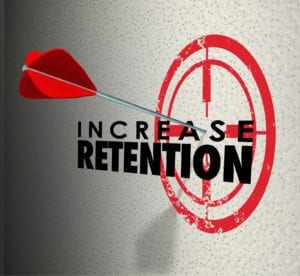For us folks here in the North, it’s that time of year when the exterior work is rolling in and we need to staff-up to meet the demand. Every painting company needs a healthy amount of guys and gals on hand to cover the seasonal increase in workload, and a solid hiring process will insure that you have employees ready to go when needed.
IF AT FIRST YOU DON’T SUCCEED
For years, guys who could show up on time, do the work required without complaint, and conduct themselves professionally were few and far between. We would hire people, they would flake out or be fired for non-performance, and we’d be stuck without enough help. This problem prevented us from growing and was a huge drain on my time [and faith in humanity].
HOW WE CREATED A SOLUTION
After this went on for a while, I resolved to change the way this worked in my business so I came up with a hiring process that we used for the remainder of my tenure with my company (before moving on to do different things).
Our hiring process looked something like this:
- Generate lots of online job postings
- Prescreen Applicants
- In-Person Interviewing, Hiring, and Onboarding
WHERE TO FIND YOUR APPLICANTS
Many people underestimate just how many applicants you need to get to actually generate a few good hires – there are a lot of undesirables (people who no-show interviews, no-show on day 1, or don’t have their life together) in the unskilled labor pool and you have to do a lot of sifting to get to the good candidates.
We mainly had luck with Craigslist, Indeed, our state’s local talent bank and sites like Painter Job Hub. You should be looking to get 10 names for every one hire that you make. Anything short of that leaves you with less-than-optimal options. This means putting in hours on the front end to cast that wide net, but it pays large dividends once you’ve brought the right people on board.
KNOW WHO YOU WANT TO APPLY
Our ideal candidate was someone searching for more of an apprenticeship than a ‘fast money’ job. We let prospective applicants know we were looking to invest in them. We focused on finding candidates that would want to grow with us.
Here was a typical job posting that we used:
Job posting for painters employees/ subs:
Click here for sample template you could use.
Job posting for painter employees only:
Click here for sample template you could use.
We pay $12-14/hour depending on experience: New guys all start at $12/ hr. Through trial and error, we found that paying less than that (in our area) didn’t bring in the caliber of people we were looking for.
PRESECREEN YOUR APPLICANTS
You have to prescreen candidates before spending time interviewing them. After receiving a resume, the initial call looked something like this:
- Build rapport
- Why is the candidate looking for a job?
- Is candidate willing to work 40 hours/ week (including weekends if necessary)?
- Is candidate allergic to bees/ latex?
- Does candidate own a car and have a valid license? (catching a ride from someone doesn’t count)
- Is the candidate able to pass a drug screen?
- Does the candidate have any prior felony convictions?
- If answers satisfactory, schedule an interview for the next day – text and email location and time
 At every step in the process, striking while the iron is hot and while you have the candidates’ attention is extremely important. That’s why I always kept the ‘time-to-next-step’ short and within sight. I’ve interviewed candidates for low-skill positions and candidates for high-skill positions and the low-skill candidates usually tend to have a shorter horizon and lose interest if the next step (reward) is not within line of sight.
At every step in the process, striking while the iron is hot and while you have the candidates’ attention is extremely important. That’s why I always kept the ‘time-to-next-step’ short and within sight. I’ve interviewed candidates for low-skill positions and candidates for high-skill positions and the low-skill candidates usually tend to have a shorter horizon and lose interest if the next step (reward) is not within line of sight.
Most of the people I’ve interviewed respond best to texts or phone calls over email. Many potentially good candidates don’t check email or would have to go to the library to check their email, but everyone could send and receive a text message or take a phone call. After the initial call, I would text them the details.
INTERVIEW IN PERSON
As part of the hiring process, interviews should happen one to two days after you pre-screen a candidate but no later than that. I always set up my interviews for the same day and time block. All interviews were scheduled to be 30 minutes long.
I had a lot of no-shows for interviews before I started texting the meeting location/ details to confirm the interview the day before. Always require confirmation – less people will show up for interviews if you don’t ask for a “got it” or “see you then” confirmation text from them.
I put together a list that includes some prequalifying questions as well as our in-person interview questions. You want to use the questions as tools to get a feel for the personality of the candidate and their willingness to learn. They will be part of a team and you will be working closely with them in many cases. I always started out by talking about the job and what would be expected of them; then the second half of the interview can be spent asking them questions.
When interviewing a candidate, I’m making a determination on where the candidate sits in the following areas:
- Does the candidate meet the pre-qualifying criteria for the position? (confirm that the answers received on the initial call are still true)
- Will the wage and hours of this job meet the candidates needs or will he/she quit/ be fired after the first week when we figure out he/she isn’t earning enough to feed the family/ drive to work?
- Attitude (does the candidate speak poorly of previous employers, general outlook – has a positive outlook or has a negative outlook and may tend to complain more)
- Coachability (can I teach this candidate or will he/she be closed to feedback)
- Is this candidate reliable? (what might past employers say about his/her performance, look at job history, amount of time spent on jobs, number of jobs, does this candidate stick with a job or does he/she move around a lot)
- Self-awareness (can this candidate identify his/ her own strengths weaknesses, can they critique themselves, do they know where they stand)
- Intended trajectory/ goals (what does this candidate want to achieve, where do they want to be in a year, consider how this job will get them there, is this position a good fit for them)
HIRE, HIRE, HIRE
 Hiring decisions were delivered the day after the interview. You want to keep the turnaround quick, while the interest is still there, but you want to make candidates feel like they earned they job, as opposed to gifting it to them at the end of the interview.
Hiring decisions were delivered the day after the interview. You want to keep the turnaround quick, while the interest is still there, but you want to make candidates feel like they earned they job, as opposed to gifting it to them at the end of the interview.
The day after the interview, when you call to offer the candidates the job, setup an appointment to come in and get on payroll for that same afternoon. It won’t feel real and they won’t feel committed until they do this.
Always over-hire – you are going to have a lot of names at the beginning – people will drop at every stage of the hiring process and some after they are hired – don’t overexpose yourself to the risks of a new hire quitting or being fired. It’s going to happen, so plan for it as part of your hiring process.
This hiring process worked for us but it’s certainly not the only way to do things – have a process that works for you?
Let us know in the comments below.



Daaaammn! All that, and your max/top wage is 12-14 an hour? What is it your hiring a short order cook at Joe’s Bar on the corner?
Hi Jerry,
I’m sure we would all love to pay our guys more, our wage decisions were always based on what it would take to reach the sales/ profit/ production goals we needed to hit.
With our sales goal, we needed at least a 40% gross margin on jobs for us to hit our profit goal. To get to our sales goal, we knew that we needed to charge around $35/ hr (this was two years ago). While, at the time we could have charged more, we couldn’t have booked the amount of work that we did with a $41/hr or $45/hr charge rate.
To get to a 40% gross margin on jobs (10%-15% in paint and materials and 45%-50% on payroll). Don’t forget that on top of the $12-$14/ hr we’re also paying about 10% for payroll taxes and another 10% for worker’s comp. So a $12/ hr guy is really a $14.4/ hr guy.
We also need to build in some time for the occasional job going over budget. Present day, we could probably get away with a $41/ hr charge rate and still book the volume of work we’d need to book, and pay guys in the $13 – $15/ hr range, maybe even more than that if we had guys coming in at or below budget on a highly regular basis.
I would certainly be interested to hear what you pay your employees and what your charge rate is. I’m always interested to get an idea of where other people are at.